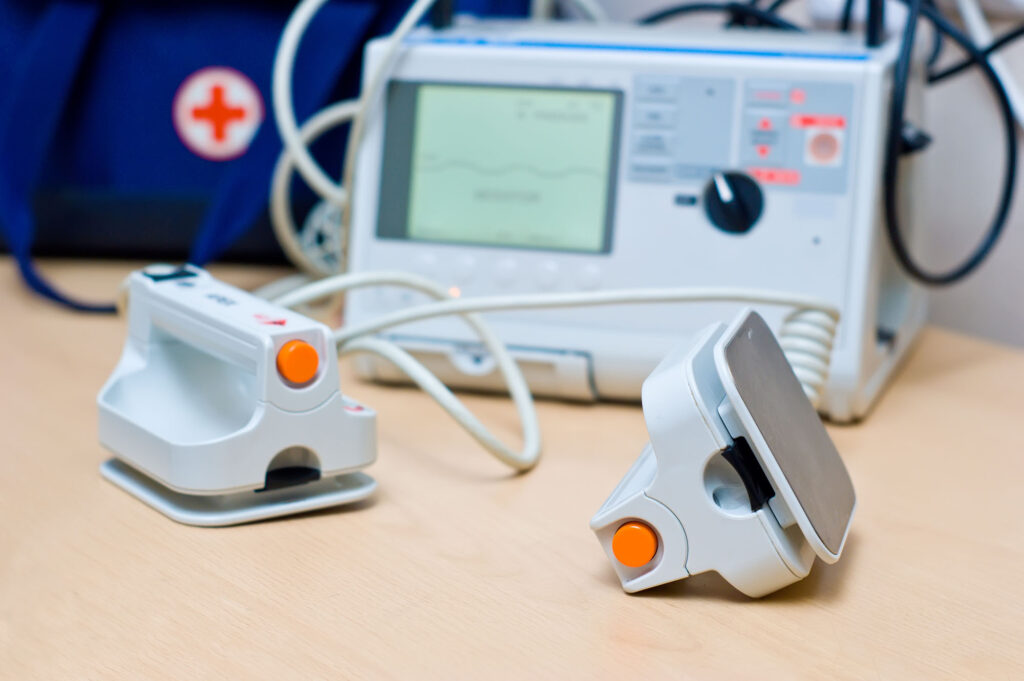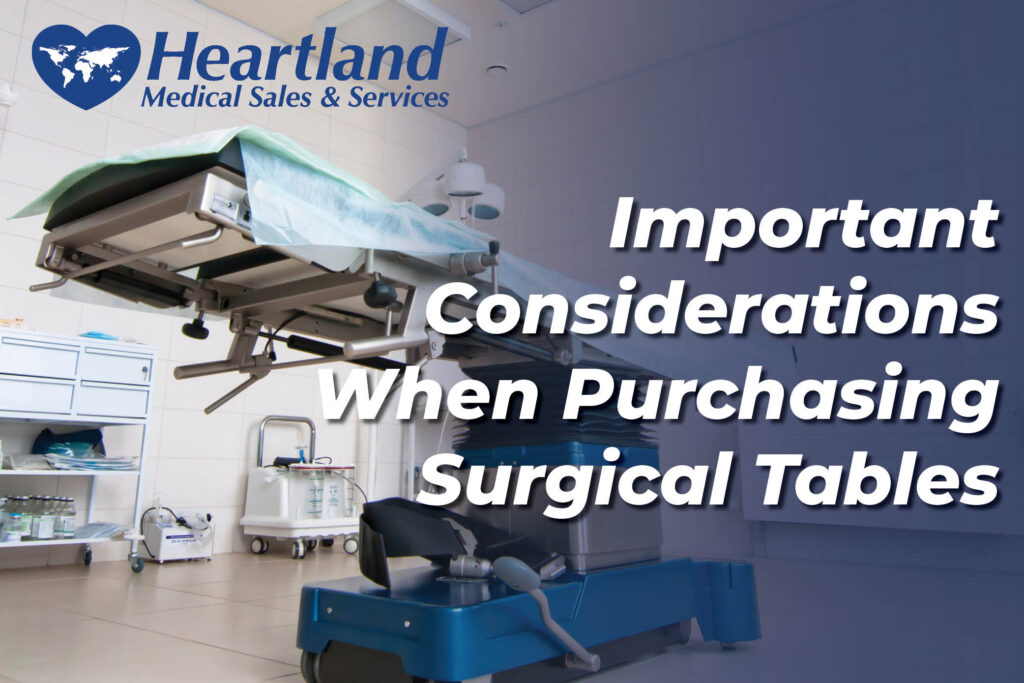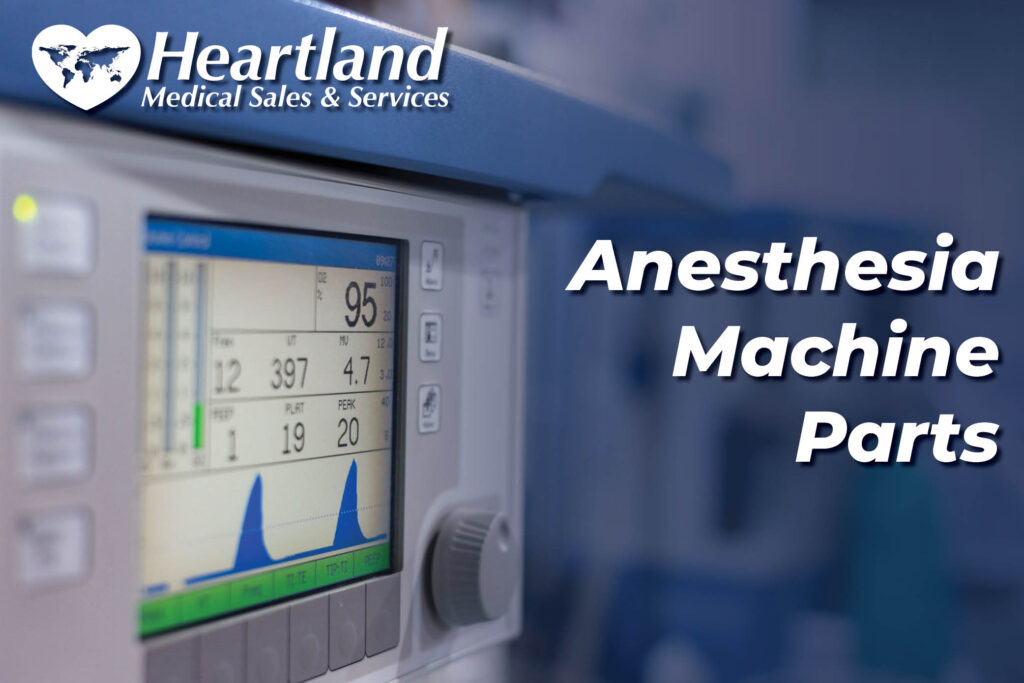Learn About How the Defibrillator is a Life-Saving Machine
We have seen the dramatic life-saving electric shock machine in almost TV shows where there’s been some sort of medical emergency. A lot of these shows are medically inaccurate and portray a misrepresentation of complex medical equipment. The electric shock machine is known as a Defibrillator. One area medical dramas have been most accurate is that a defibrillator is one of the most important and life-saving machines. They come in handy in case of a heart emergency, like arrhythmia’s.
In this blogpost, we will cover the following aspects about a defibrillator:
- What is a defibrillator?
- What is a defibrillator used for?
- How to use a defibrillator?
What Is a Defibrillator?
Defibrillators are electrical devices that send an electric pulse through the heart to restore it to normal function. Sometimes, even if the heart has stopped beating, an electric shock from the defibrillators can make it start pulsating again. There are different kinds of devices but it is more likely that you are only familiar with AED Defibrillator.You can find these in hospitals, around public spaces, and even in some people’s homes. They are crucial in case of a heart attack and are kept in public spaces to cater to any emergency that may arise. The other kinds of defibrillators also serve the same basic purpose; however, they all are a little different from each other in terms of their functionality.
There are three different kinds of defibrillators:
- AED (Automated External Defibrillators)
- ICD (Implantable Cardioverter Defibrillators)
- WCD (Wearable Cardioverter Defibrillators)
Automated External Defibrillators
Automated external defibrillators (AED’s) are backpack-sized machines. These machines are capable of sensing the heartbeat, discerning between the different heart rhythms, and in case of a sudden cardiac arrest or an arrhythmia, sending an electric shock through your heart.
These machines are highly effective and can save a person’s life by restoring their heartbeat to normal. Usually, AED’s contain paddles or sticky pads that you must press against the person undergoing a sudden cardiac arrest. These paddles contain electrodes that act as sensors as well as the tools through which the shock is delivered. AED is equipped with microprocessors and microchips that basically makes them a tiny computer that can perform certain functions. They are programmed such to sense and analyze the heartbeat, and based on this they automatically deliver the shock. They are also known simply as automatic defibrillators. However, there are some defibrillators that need to be calibrated to a certain level and do not function automatically.
Implantable Cardioverter Defibrillators
ICD’s are surgically planted in your body if you are at high risk for heart attacks, or if you have an arrhythmic condition where your heart frequently requires external assistance in order to function properly. ICD’s are also automatic defibrillators and are quite well programmed. They can perform various functions, including recording your heart rhythm patterns so that your doctor can monitor them later.
ICD’s should not be confused with pacemakers that are surgically planted into a person’s body. Pacemakers are only capable of providing your heart with shocks of a certain preset energy level. However, ICD’s are programmed to compute your heart rhythms and heartbeat and act accordingly. ICD’s is capable of delivering a much higher energy level shock as compared to the pacemakers, depending on your heart condition.
Wearable Cardioverter Defibrillators
Wearable cardioverter-defibrillators are a hybrid between automated external defibrillators and implantable cardioverter defibrillators. These devices are placed on your skin. They are usually in the form of a vest that you have to wear. The electrodes are attached to your skin such that they can monitor your heart activity and in case of arrhythmia the device sends an automated electric shock to restore your heart function to normal.
Since these are external devices, most of the WCD’s are equipped with some sort of alarm or notification mechanism to give you a heads up before sending an electric shock. This allows the person wearing these devices to check if they require an electric shock, they have a choice of turning them down in this case. If a person is having a rather serious episode, they may not respond to the notification and the device with carry out its function. However, the device is appropriately time-sensitive and takes the required action without delaying the process.
All three of these devices are automatic defibrillators. These defibrillators are best to use in an emergency when there is no medical professional around. The AEDs come with simple instructions and anyone around the person undergoing the emergency can help them out. The other two types of defibrillators are more efficient, but are only recommended for those who are at higher risk.
What Is a Defibrillator Used for?
Anyone going through a cardiac arrest or an arrhythmia may need a defibrillator to restore their heart function to normal. Ventricular fibrillation is the phenomenon where your heart starts acting irregularly. This is a sort of arrhythmia but is much more dangerous. In a V-fib condition, electrical impulses that are already there in your heart cause your ventricles to malfunction, resulting in your heart failing to pump blood through your body. This can be fatal if not treated immediately and the only effective method is to jolt the heart back to its normal function. This is where a defibrillator comes into play, it reboots your heart activity and can save a person’s life.
Defibrillator derives its name from the term fibrillate, which means that your heart muscles start contracting irregularly. A defibrillator is used to stop fibrillation and make the heart go back to its normal functionalities.
How to Use a Defibrillator?
ICD’s and WCD’s work on their own and do not require any human assistance. If you are a patient of arrhythmia and have episodes quite frequently your doctor may suggest you choose from one of the two options.
However, AED’s require human assistance and are present in case of any emergency. These devices are usually packed with instructions so that anyone can use them to help someone. The process is simple, however, it requires you to pay a lot of attention. You should not be touching the person once you have placed the electrodes. The AED device will be equipped with vocal notifications that can also guide you through the process. Once you have placed the electrodes, the AED will take over. The AED may deliver more than one shocks, in any case, the device will inform you through the process and help you to assist it. You may also be required to give CPR to the person going through an episode of cardiac arrest.
It is important that you promptly call 911. While the process is failure simple, the person may need more medical attention and it is better to have professionals on the scene. It is also important that you get training in rescue practices such as CPR and AED use to better equip for any emergencies.
"*" indicates required fields




